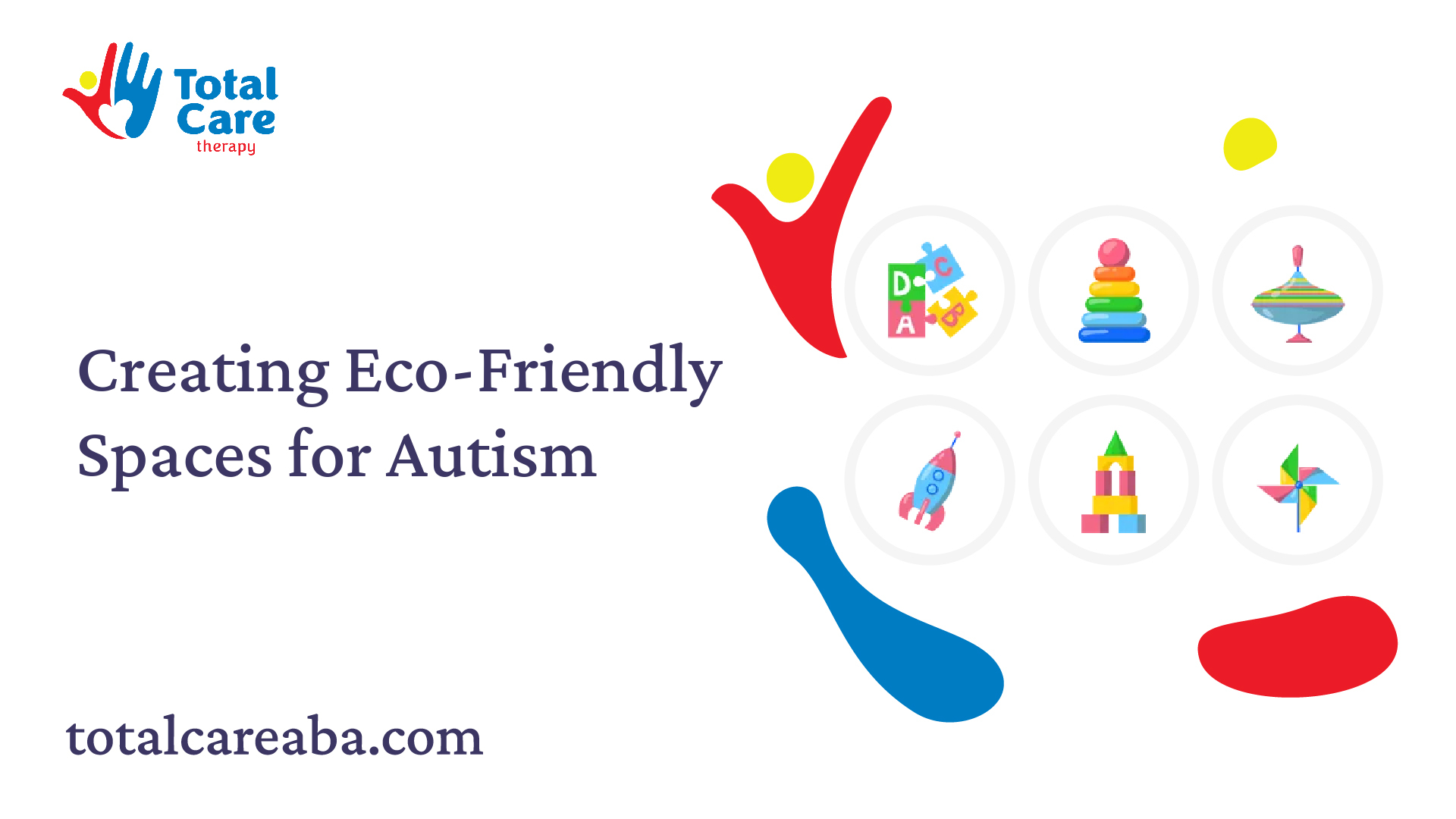Creating Eco-Friendly Spaces for Autism
Discover tips for creating eco-friendly spaces for autism that nurture comfort and inclusivity for your loved ones.
Creating Eco-Friendly Spaces for Autism
Designing Autism-Friendly Spaces
Creating spaces that cater to the needs of individuals with autism is essential for enhancing their quality of life. This section addresses the significance of the environment and sensory considerations in autism-friendly design.
Importance of Environment in Autism
The environment plays a crucial role in the well-being of individuals with autism. Research indicates that changing the surroundings can significantly lower behavioral episodes. Adapting or avoiding environmental triggers, incorporating methods to alleviate frustration and anxiety, and fostering understanding can lead to more successful experiences for individuals with autism Autism Speaks.

Designing spaces that promote comfort can include features like:
Key ElementsDescriptionNeutral ColorsUse soft, neutral colors to reduce overstimulation.Open LayoutsCreate open spaces to avoid feelings of confinement.Acoustic DesignIncorporate sound-absorbing materials to minimize noise distractions.Clear PathwaysEnsure easy navigation to reduce anxiety from potential obstacles.
Special considerations, such as the design of bathrooms, can also aid individuals during toilet training. Recommendations include making bathrooms as neutral as possible, ensuring adequate space around fixtures, maintaining warmth, and addressing sensory factors like temperature, lighting, and sound Autism Speaks.
Sensory Considerations
Sensory challenges are often prevalent in individuals with autism, making it essential to implement design features that promote sensory-friendly experiences. Creating environments that account for sensory sensitivities can foster a sense of security and comfort.
When designing autism-friendly spaces, parents should consider the following sensory aspects:
Sensory ElementRecommendationLightingUtilize adjustable, energy-efficient smart lighting to control brightness and reduce glare [1].SoundIncorporate soundproofing or soft background music to minimize auditory distractions.TextureUse a variety of textures in furnishings to create a comforting tactile experience.TemperatureMaintain a comfortable temperature to address sensory sensitivities.
Incorporating eco-friendly principles can also enhance the sensory experience. For instance, using sustainable materials aligns with environmental benefits and lessens the toxicity levels in homes My Team ABA. The integration of sensory-friendly designs within eco-friendly spaces can significantly benefit both individuals with autism and their families by promoting a tranquil and supportive environment.
By thoughtfully designing spaces with environmental and sensory considerations in mind, parents can create nurturing and inclusive spaces that support the developmental needs of their children with autism. For further insights, explore energy-efficient homes for autism families and creating eco-friendly spaces for autism.
Creating Comfortable Home Environments
Creating a comfortable home for individuals with autism involves implementing eco-friendly innovations and sustainable energy solutions. These approaches not only promote a healthy living environment but also contribute positively to sensory experiences.
Eco-Friendly Innovations
Eco-friendly innovations can significantly enhance the comfort and functionality of spaces designed for individuals with autism. These innovations encompass a variety of materials and designs aimed at creating a nurturing environment while prioritizing sustainability.
Some key eco-friendly innovations include:
Innovation TypeDescriptionSustainable MaterialsUtilizing non-toxic, natural materials in furniture and decor, such as bamboo, reclaimed wood, or organic fabrics.Smart Home TechnologyInstalling smart home systems that adjust lighting, temperature, and noise levels to cater to sensory needs. This can be particularly beneficial for families in Georgia and Pennsylvania looking to enhance comfort with clean energy solutions for autism families.Indoor PlantsIncorporating plants that improve air quality and create a calming atmosphere. Additionally, some indoor plants can also serve as sensory tools.
Integrating these eco-friendly innovations into home environments aligns with the principles of creating eco-friendly spaces for autism to offer both comfort and sensory benefits.
Sustainable Energy Solutions
Sustainable energy solutions are vital for creating energy-efficient homes that cater to the unique needs of individuals with autism. These solutions help minimize environmental impact and lower utility costs, contributing to a more peaceful and comfortable living environment.
Some common sustainable energy solutions include:
Solution TypeBenefitsSolar PowerReduces energy costs and carbon footprint while providing a reliable energy source. Families can benefit from how solar power benefits autism communities.Energy-Efficient AppliancesUtilizing appliances that consume less energy can create a quieter home environment, reducing sensory overload. Explore more energy-efficient tips in our article on autism-friendly energy-saving tips.Smart ThermostatsAllow for better temperature regulation, creating a more comfortable atmosphere while conserving energy.
The implementation of sustainable energy solutions not only fosters comfort but also ensures an eco-friendly aspect that can benefit families in the long run. The blend of these energy-efficient practices and eco-friendly strategies results in supportive home environments tailored for individuals with autism, helping create spaces that are both functional and nurturing.

Building Autism-Supportive Workspaces
Creating inclusive work environments for individuals with autism is essential to fostering their productivity and comfort. The right adjustments can make a significant difference in their ability to thrive and succeed in the workplace.
Workplace Adjustments
Employers can implement various adjustments to create autism-supportive workspaces. These changes focus on minimizing sensory disturbances and providing an environment conducive to focus and calm. Recommended strategies include:
Adjustment TypeDescriptionAcousticsMaintain a calm work environment and ensure good air qualityVisual RelationshipsCreate discreet supervision areas that allow visibility of different work environmentsTransition SpacesProvide areas for employees to calm down and reorient between tasks
Adaptive architectural designs focused on minimizing sensory disturbances can significantly enhance the productivity and integration of individuals with ASD. This kind of thoughtful design helps employees navigate their surroundings comfortably, enabling them to contribute effectively to their organizations.
Employment Opportunities
Accessible workplaces can cater to the unique abilities of individuals with autism by offering diverse job roles tailored to their strengths. Potential employment opportunities include:
Individuals with autism often possess exceptional skills such as strong concentration, attention to detail, and robust problem-solving abilities. By recognizing and leveraging these strengths, employers can create a more diverse and productive workforce.
Employers who implement these strategies not only support individuals on the autism spectrum but also foster an inclusive and innovative workplace culture. Organizations can enhance their operational capacity while providing meaningful employment to those who are often overlooked. For more on how to make workspaces even more inviting, check out our section on energy-efficient workspaces for neurodiverse teams.
Enhancing Sensory Enrichment
Creating environments that support sensory enrichment is essential for children diagnosed with autism. This section will outline the benefits of enrichment therapy and provide ideas for implementing enrichment activities.
Enrichment Therapy Benefits
Environmental enrichment therapy has been shown to produce significant improvements in various symptoms associated with autism spectrum disorder (ASD). Research indicates that by incorporating sensory activities into their routine, children can experience enhancements in learning, memory, anxiety, attention span, motor skills, sensory processing, and social skills.
In a study involving over 1,000 children, the initial average symptom severity score improved significantly after participating in sensory enrichment therapy. The effectiveness of this therapy indicates that it can benefit individuals across different ages and levels of symptom severity:
Initial Symptom Severity ScoreFinal Symptom Severity ScoreEffect Size2.482.93-1.68
The therapy included a variety of sensory exercises performed twice a day for 10-15 minutes. These exercises involved engaging with different textures, object manipulation, and stimulation across visual, auditory, proprioceptive, and vestibular senses [3]. Parents' involvement in these activities also played a crucial role in the therapy's success; higher engagement levels correlated with better outcomes for children.
Implementing Enrichment Activities
To effectively implement sensory enrichment activities at home, parents can incorporate a range of exercises designed to stimulate different senses. Here are some ideas to consider:
Creating eco-friendly spaces for autism, with an emphasis on sensory enrichment, can greatly improve the wellbeing of children with autism. Incorporating these strategies fosters an environment conducive to learning and social interaction. For additional resources, consider exploring topics such as energy-efficient homes for autism families and smart home tech for autism sensory needs to further enhance the living space.
Advocating for Inclusive Communities
Fostering inclusive communities is essential for supporting individuals with autism. It involves actively engaging community members in initiatives that benefit everyone while prioritizing eco-friendly practices.
Community Engagement Initiatives
Community engagement is a powerful tool in advocating for more inclusive environments for individuals with autism. In Stirling, Scotland, the local government increased opportunities for children with complex additional support needs, including Autism Spectrum Disorder, by expanding the number of spots in specialist secondary schools. Community members participated in decision-making through surveys and public forums, emphasizing the importance of inclusive input [4].
Engaging residents ensures that their voices are heard and that initiatives align with community needs. For example, participating in budgeting processes allows families to prioritize spaces and resources that cater to autism needs while promoting sustainability.
Community InitiativeDescriptionStirling's Specialist SchoolsExpansion of secondary schools for children with autism through public feedback.Antony's Participatory Budgeting€600,000 project enabling residents to propose and vote on sustainable development projects.
Promoting Sustainable Development
Promoting sustainable development is crucial in creating eco-friendly spaces for autism. The city of Antony in France initiated a participatory budgeting project to allow residents to address priorities for local sustainable development. With a budget of €600,000, residents proposed and voted on projects that create green spaces, enhance mobility, and encourage a circular economy. This initiative supports Sustainable Development Goal 13 (Climate Action) among others [4].
In addition to community projects, integrating sustainable energy solutions into autism supportive spaces can enhance accessibility while reducing environmental impact. Strategies such as energy-efficient designs for autism-friendly schools and homes allow for comfortable and safe environments. Parents can consider energy-efficient homes for autism families and explore sustainable energy for autism support centers to further contribute to eco-friendly living.
Emphasizing collaboration within the community and supporting sustainable development enables a positive impact on the lives of those with autism and creates a better world for everyone.
Leveraging Alternative Therapies
Camel Milk Benefits
Camel milk has emerged as a potential alternative therapy for managing conditions such as autism spectrum disorders (ASDs). The unique composition of camel milk includes essential vitamins, minerals, and protective proteins known as immunoglobulins. These components offer antioxidant, antibacterial, and antiviral properties, making camel milk a valuable addition to the diets of children with autism.
Research indicates that individuals consuming camel milk may experience benefits such as reductions in symptoms associated with autism. A meta-analysis demonstrated significantly lower Childhood Autism Rating Scale (CARS) scores in ASD intervention groups treated with raw and boiled camel milk compared to a placebo group consuming cow milk.
ComponentBenefitsEssential VitaminsSupports overall healthMineralsContributes to bone density and metabolic processesImmunoglobulinsBoosts the immune system and reduces inflammation
Therapeutic Potential of Camel Milk
The therapeutic potential of camel milk goes beyond autism. Studies indicate that camel milk can help manage various conditions, such as diabetes, hepatitis, tuberculosis, liver cirrhosis, and even cancer, thanks to its immune-boosting proteins and nutrients [5].
While camel milk shows promise, further research is necessary. The study advocates for larger, more populated randomized controlled trials (RCTs) to better understand how camel milk may be beneficial for treating central nervous system (CNS) disorders, including ASDs. As parents explore various alternative therapies in their journey towards creating eco-friendly spaces for autism, it is essential to stay informed about treatments that show potential.
For more insight on other alternative therapies, consider exploring topics like cognitive remediation therapy or facilitated communication and autism. By doing so, parents can discover a range of supportive strategies aimed at enriching their children's lives.
References
[2]:
[3]:
[4]:
[5]:








